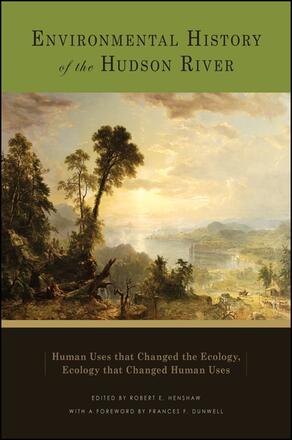
Environmental History of the Hudson River
Human Uses that Changed the Ecology, Ecology that Changed Human Uses
Alternative formats available from:
Biologists, historians, and social scientists explore the reciprocal relationships between humans and the Hudson River.
Description
Winner of the 2012 Award for Excellence presented by the Greater Hudson Heritage Network
The diverse contributions to Environmental History of the Hudson River examine how the natural and physical attributes of the river have influenced human settlement and uses, and how human occupation has, in turn, affected the ecology and environmental health of the river. The Hudson River Valley may be America's premier river environmental laboratory, and by bringing historians and social scientists together with biologists and other physical scientists, this book hopes to foster new ways of looking at and talking about this historically, commercially, and aesthetically important ecosystem.
Native people's influences on the ecological integrity of aquatic and shoreline communities were generally local and minor, and for the first 12,000 years or so of human use, the Hudson River was valued mainly as a source of water, food, and transportation. Since the arrival of European colonists, however, commerce has been the engine that has driven development and use of the river, from the harvesting of beaver pelts and timber to the siting of manufacturing industries and power plants, and all of these uses have had pervasive effects on the river's aquatic and terrestrial ecosystems. In the meantime, aesthetic movements such as the Hudson River School of painting have sought to recover and preserve the earlier pastoral landscape, anticipating the more recent efforts by environmentalists that have led to dramatic improvements in water quality, shoreline habitats, and fish populations.
Despite the pervasive forces of commerce, the Hudson River has retained its world-class scenic qualities. The Upper Hudson remains today a free-flowing, tumbling mountain stream, and the Lower Hudson a fjord penetrated and dominated by the Hudson Highlands. The Hudson's unique history continues to affect current uses and will surely influence the future in remarkable ways.
Robert E. Henshaw received his Ph.D. in environmental physiology at the University of Iowa and worked for twenty years as an environmental analyst at the New York State Department of Environmental Conservation. He has taught in the Department of Geography and Planning at the University at Albany–SUNY, and is a member of the Board of Directors of the Hudson River Environmental Society. He lives in West Sand Lake, New York.
Reviews
"…the book offers several valuable contributions to our understanding of the Hudson and its environmental history … it brings to public attention the importance and complexity of one of America's great rivers. " — H-Net Reviews (H-Environment)
"Section introductions by the editor, Robert E. Henshaw, successfully weave the disparate topics into a cohesive chronicle … The book eloquently concludes that 'the Hudson River has been uniquely important to New York's culture, history, commerce, and tourism. ' It also has forged a link between the interrelated aspects of city and country, technology and nature, industry and leisure, and business and art. " — Kaatskill Life
"…captures the Hudson's complex identity and defines the importance of the river both as its own entity and to the region it supports. " — Hudson River Valley Review
"Overall, the book makes a strong case for the important roles that the Hudson Valley's citizenry played in US transportation systems (first steamship and railroad), art (Hudson River School), law (litigation leading to landmark environmental legislation), conservation (Theodore Roosevelt while New York governor), and environmental and ecological investigations. This extensive account provides an optimistic picture of the region's current situation and future prospects despite some lingering problems (including urban sprawl) … Highly recommended. " — CHOICE